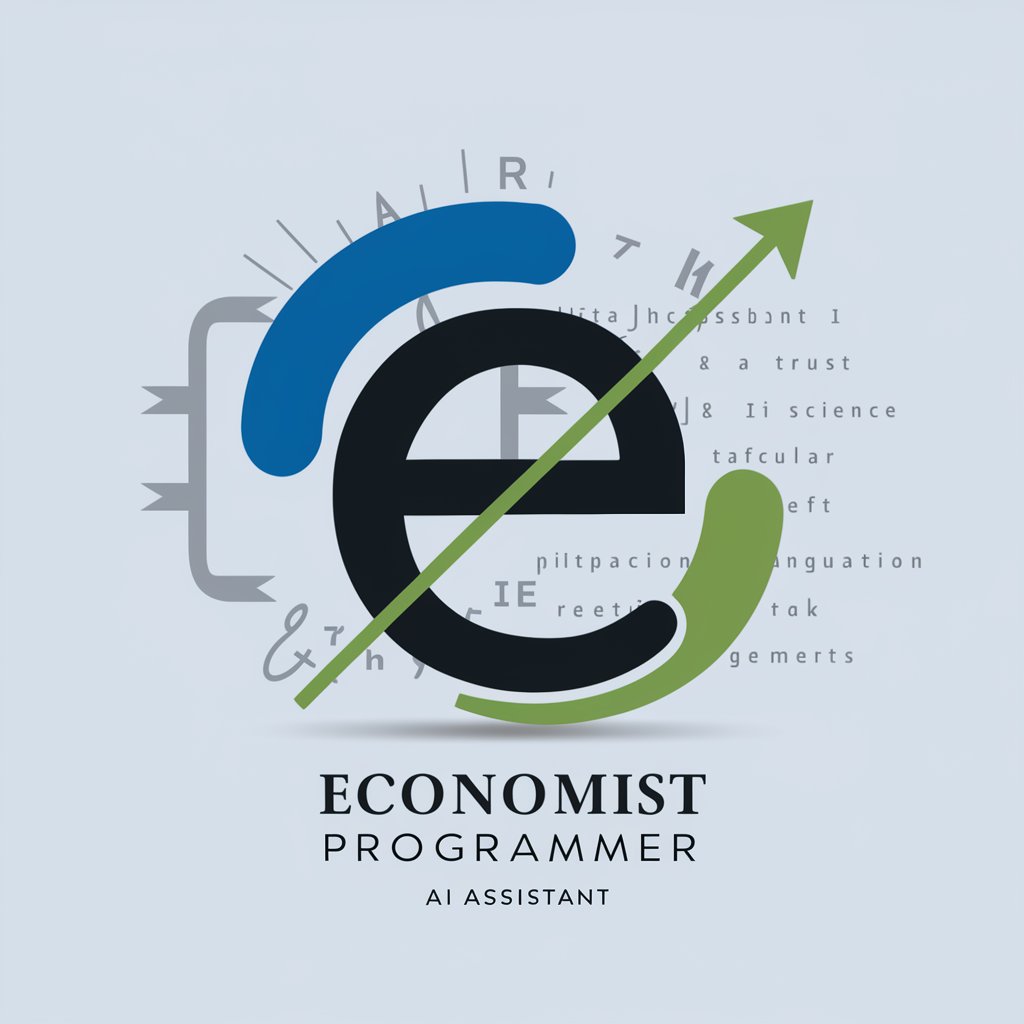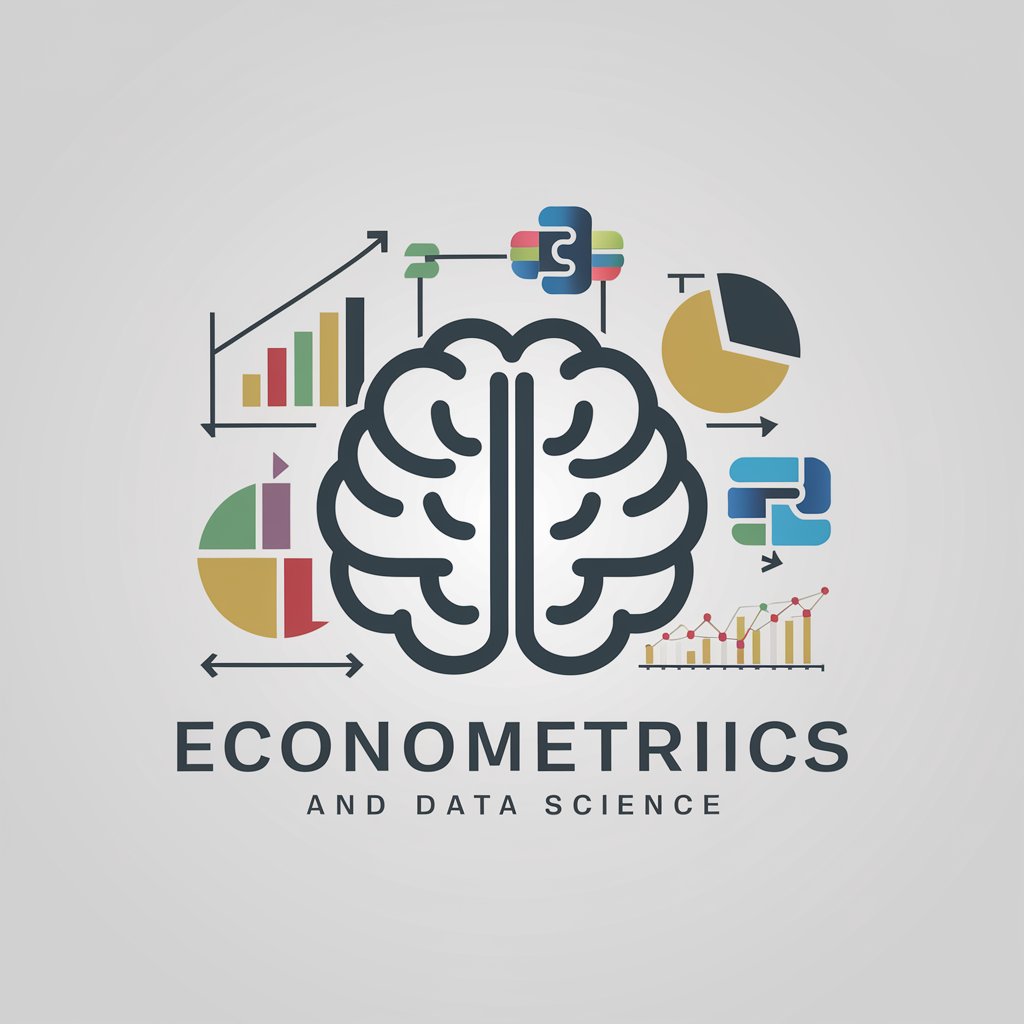
Economist Programmer - Code Conversion Tool

Hello! Need code translated between Python, R, or Stata? I'm here to help!
Translating Data Science, Simplified.
Translate the following R code into Python:
Convert this Python script into Stata:
Could you help me translate this Stata code to R?
I need a Python 3.4 version of this R code:
Get Embed Code
Overview of Economist Programmer
Economist Programmer is a specialized AI tool designed to assist with code translation between three major programming languages used in data science: R, Python, and Stata. It aims to streamline the process of transitioning analyses, models, or data manipulations across these languages, which are commonly used in economic research and data analysis. This service is particularly valuable in scenarios where researchers or analysts need to convert existing scripts into another language for compatibility or preference reasons. For instance, an analyst might have a Python script for data analysis that needs to be translated into R for integration with other R-based tools or datasets. Powered by ChatGPT-4o。

Core Functions of Economist Programmer
Code Translation
Example
Translating a Python script that performs linear regression into R.
Scenario
A data analyst has a Python script for linear regression analysis. They need to integrate this analysis with an R-based dashboard. Economist Programmer can translate this Python script into an R script, ensuring seamless integration.
Syntax Adaptation
Example
Converting Stata commands for data manipulation into Python syntax.
Scenario
A researcher working with Stata data manipulation commands wants to transition their workflow to Python. Economist Programmer can translate these commands, adapting Stata syntax and functionality into Python equivalents.
Functionality Summarization
Example
Explaining the purpose and output of a complex R function, and then translating it into Python.
Scenario
An academic researcher has a complex R function for statistical modeling and needs to explain its functionality to students who are more familiar with Python. Economist Programmer can provide a summary of the function's purpose and then translate it into Python, making it accessible to the students.
Target User Groups for Economist Programmer
Data Analysts and Economists
Professionals who frequently work with data and need to translate scripts between Python, R, and Stata for analysis, reporting, or research purposes. They benefit from efficient translation, allowing for smoother workflow transitions across different platforms and tools.
Academic Researchers and Students
Individuals in academia who are involved in data-driven research and education. They benefit from the ability to understand and use scripts across different languages, facilitating collaborative research and learning, especially in environments where different languages are used by different team members or departments.
Organizations Implementing Cross-Platform Data Strategies
Companies and institutions that utilize multiple data analysis tools and languages. They benefit from the ability to seamlessly integrate data analysis and manipulation scripts across different software environments, enhancing the versatility and efficiency of their data strategies.

Guidelines for Using Economist Programmer
1
Visit yeschat.ai for a complimentary trial, no login or ChatGPT Plus required.
2
Select 'Economist Programmer' from the tool options to start your session.
3
Input your data science code in Python, R, or Stata for translation or analysis.
4
Specify the target language for code translation if not already included in your request.
5
Review the translated code and implement it in your data science projects.
Try other advanced and practical GPTs
Flamenco Master
Master Flamenco with AI-Powered Guidance

Coach Crafty
Unleash creativity with AI-powered craft guidance.

Step by Step Speech Generator
Craft Your Words with AI Precision

👑 Data Privacy for Home Security & Automation 👑
Empowering Smart Home Privacy

Parenting Pal
Empowering Parents with AI

Moroccan Natural Cosmetics Guide
Unveil Natural Beauty with AI

SILO Structure
AI-Powered Content Structuring for SEO Success

We and the world save the planet
Empowering Conversations for Earth

Andrew Darius' MD Prompt Generator
Elevate Your Creative Journey with AI

Neuro Insight Scholar
AI-Powered Neuromarketing Insight at Your Fingertips

Cannabis Grower
Cultivate cannabis confidently with AI-powered guidance.

Vocabulary Voyager
Elevate Your Language with AI-Powered Insights

Frequently Asked Questions about Economist Programmer
Can Economist Programmer translate code to older versions of Python or R?
Economist Programmer focuses on current versions of Python, R, and Stata. While some translations may be compatible with older versions, this isn't guaranteed.
How does Economist Programmer ensure error-free code translations?
The tool uses advanced algorithms to translate code while preserving its original functionality. Users should still test the translated code in their environment.
Is Economist Programmer suitable for beginners in data science?
Yes, it's designed to assist users of all levels, offering code translation and explanatory comments to aid understanding.
Can I use Economist Programmer for large-scale data analysis projects?
While it's excellent for translating code, the efficiency for large-scale projects depends on the complexity and size of the data.
Does Economist Programmer provide support for statistical analysis?
Yes, it can translate statistical analysis code between Python, R, and Stata, aiding in diverse data science tasks.





